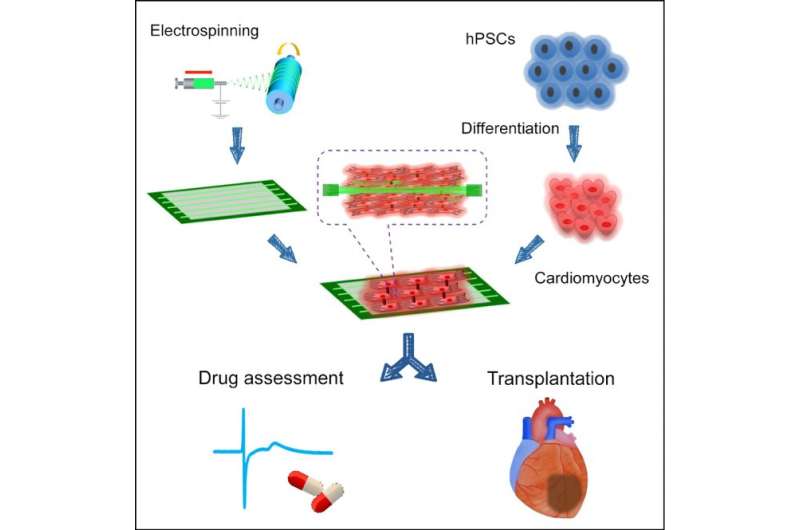Mending hearts in three dimensions

The creation of cardiac tissue-like constructs could offer an effective and convenient "woundplast" for repairing myocardial infarction.
Researchers from Kyoto University iCeMS and Osaka University have made biodegradable aligned nanofibers as a scaffold for culturing cardiomyocytes (CMs) derived from human induced pluripotent stem cells (hiPSCs). These CMs form myofibril-aligned, multi-layered and 3-D-organized Cardiac Tissue-Like Constructs (CTLCs), which show robust drug response and may be readily used for repair of injured rat hearts with myocardial infarctions.
Researchers from the Institute for Integrated Cell-Material Sciences (iCeMS) of Kyoto University and the Department of Cardiovascular Surgery of Osaka University have developed effective and convenient Cardiac Tissue-Like Constructs (CTLCs) for repairing myocardial infarctions.
Cardiovascular diseases such as infarctions are the leading cause of death globally. A seriously injured heart cannot recover by itself, and heart transplants are the only effective treatment. However, the waiting list for transplants is extremely long. Previous researchers have also used cell transplant technologies to repair injured hearts, but these used CMs organized in two dimensions with a random, myofibril structure, which is different from natural heart tissue.
Dr. Li Liu and Prof. Yong Chen of iCeMS, together with Prof. Yoshiki Sawa of Osaka University and colleagues, selected a PLGA material approved by the FDA, and prepared biodegradable, aligned nanofibers for culturing CMs derived from hiPSCs, successfully creating organized and functional CTLCs.
They found that the CMs infiltrated and enveloped the nanofibers, showing elongation and high organization with upregulated expression of cardiac markers. Their CTLCs demonstrated more robust drug response compared with 2-D CMs.
The team also used the CTLCs to simulate the repairing of disconnected and arrhythmia CMs. When used to repair injured rat hearts, the CTLCs showed excellent operability leading to favorable heart function recovery.
Future studies are now being planned to use CTLCs to repair injured hearts of larger animals, before advancing to clinical applications.
More information: Junjun Li et al. Human Pluripotent Stem Cell-Derived Cardiac Tissue-like Constructs for Repairing the Infarcted Myocardium, Stem Cell Reports (2017). DOI: 10.1016/j.stemcr.2017.09.007




















